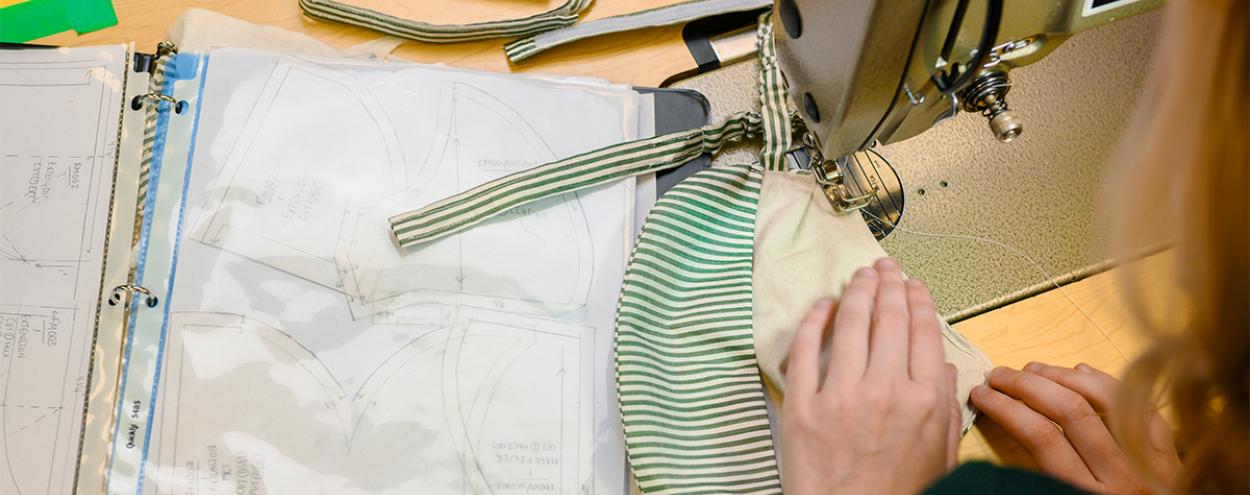
George Brown College teamed up with Canadian fashion industry leader Robin Kay to launch a student competition to create wearables that serve a meaningful purpose in a pandemic and post-pandemic world.
The MAKECanada Challenge launched in the fall of 2020. It called on students at the Centre for Arts, Design and Information Technology to design items that would protect the wearer from the environment (e.g., COVID-19, pollution or UV rays), and provide a solution to a real problem. The designs must also have a focus on sustainability and innovation.
Semi-finalists were announced in each category in February and were paired with an industry mentor. They created prototypes at George Brown’s Fashion Exchange (FX) and other facilities.
Winning designs
Winning designs were announced October 5, 2021, in the following three categories:
Accessories
Sarah Ghomi and Mehrshad Naraghi created beads and charms of the word HOPE that can be worn with necklaces and bracelets.
“Depression, mood, and anxiety disorders are among the most common types of mental health disorders in Canada and have been shown to impact the daily lives of those affected significantly," the pair said.
“We realized that remembering the word HOPE can help everybody survive environmental damage, such as the recent COVID-19 pandemic. Therefore, wearing HOPE beads and charms as accessories can spread a good vibe of energy and have the potential to become a new trend.”
Apparel
Vishali Sitharthan created a puffer jacket with a focus on the environmental impact of the pandemic. The jacket is filled with sterilized and recycled personal protective equipment (PPE). The outer shell of the jacket is constructed with fabric made from recycled plastic bottles.
“My research began with talking to the doctors in my family, as I was curious to know what they use as protective gear and what happens to it after it has been used. My uncle, Dr. Randhir, mentioned that hospitals have been using PPE suits more and that the need is constantly increasing,” she said. “This raised a question in my mind, what do they do with the protective gear and PPE suits after they are used?”
Soft goods
Sarah Jill DeCoste designed masks with comfort in mind, particularly for people who wear head coverings, turbans, and have beards. Sarah’s MY MASK products are also made with luxury textiles, including silk and seacell.
“The goal of the 'MY MASK' is to make those who despise wearing uncomfortable masks thrilled to wear this one, because these are a COVID staple,” she said.
What’s next for the winners?
The winning designs will be manufactured at George Brown’s School of Fashion and Jewellery, and the Fashion Exchange (FX). The items are currently in production and will then be sold at the School of Design’s IN Store and makecanada.org.
“At George Brown, we are always looking for innovative ways to give our students real world experiences that go beyond the classroom and connect them with their future communities.” said Luigi Ferrara, Dean, Centre for Arts, Design and Information Technology. “The MAKECanada Challenge has provided a unique opportunity not only for our faculty and staff to work together in new ways, but also for our students to work closely with professionals in their industry, on a topical and meaningful challenge, with actual tangible results.”
MAKECanada Winners



